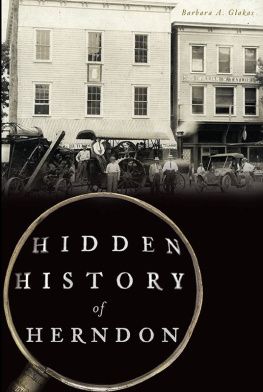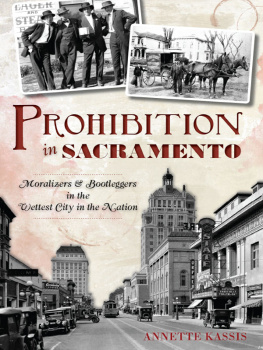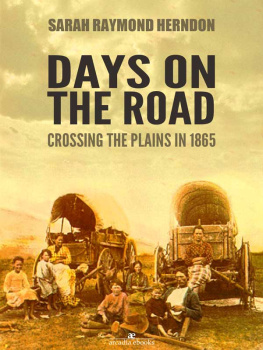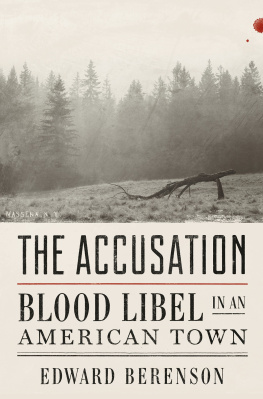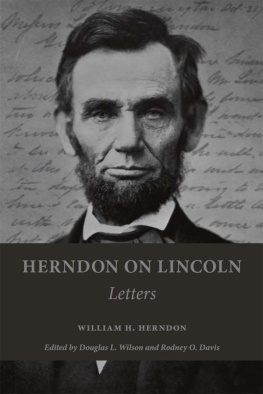


Published by The History Press
Charleston, SC
www.historypress.com
Copyright 2019 by Barbara A. Glakas
All rights reserved
Front Cover: Farm machinery in front of the Hutchison and Mitchell Building on Station Street, circa 1916. J. Berkley Green Collection of the Herndon Historical Society.
First published 2019
e-book edition 2019
ISBN 978.1.43966.636.4
Library of Congress Control Number: 2018963526
print edition ISBN 978.1.46714.096.6
Notice: The information in this book is true and complete to the best of our knowledge. It is offered without guarantee on the part of the author or The History Press. The author and The History Press disclaim all liability in connection with the use of this book.
All rights reserved. No part of this book may be reproduced or transmitted in any form whatsoever without prior written permission from the publisher except in the case of brief quotations embodied in critical articles and reviews.
This book is dedicated to Miss Judith Anderson and Dr. Daniel McFarland, who taught history like a story and sparked my interest.
G.M. Hopkins Map, 1878.

The earliest known map of Herndon, 1878, created by G.M. Hopkins. Fairfax County Public Library Photographic Archive.
CONTENTS
ACKNOWLEDGEMENTS
I would like to extend my heartfelt thanks to the many Town of Herndon and Fairfax County employees and to the many Herndon residents, past and present, who so willingly allowed me to interview them and have access to historic records and family documents. Without their cooperation, I would not have been able to tell the stories of Herndons hidden past. At the risk of inadvertently omitting someones name, those individuals are listed below.
Chris Adams
Janet Allder
Lisa Anderson
Art Anselene
Brad Anzengruber
Pat Beckner
Katie Blair
Bob Boxer
Jean Brooks
Carol Bruce
Mary Burger
Jimmy Cirrito and staff
Virginia Clarity
Ron Colan
Eddie Colon
Jeff Colon
Lea Coyell
Anne W. Crocker
Richard Crouch
Ann Csonka
Margaret Cyrus
Diane DAmico
Tony DeBenedittis
Maggie DeBoard
John DeNoyer
Mrs. and Mrs. Arthur de Butts
Richard Downer
John Dudzinksy
Kevin East
Tom Evans
Wesley Fox
Benjamin C. Garrett II
Lisa Gilleran
Paul Glass
Lucinda Brooks Gormes
Carrol Groff
Sue Groff
Francis Guber
Don Hakenson
Walter Harrison
Anne Harvey
The Herndon Historical Society
Maryana James
Kate Jenkins
Katrina Krempasky
Dave Kochendarfer
Donald M. LeVine
Mary Lipsey
Sonny Lynch
Elma Mankin
Chuck Mauro
Paul McCray
Tim McGrath
Elaine McRey
Steve Mitchell
Mike Moore
Nancy Myers
Sharon and Arthur Nachman
Howard Nachman
Virgie Needab
Theodore Needab
Mike OConnor
Margaret Peck
Arno Randall
Joy Reed
Doris Rosenberg
Patsy Rust
Paul Sangster
Robert J. Schneider
Dana Singer
Darryl Smith
Ronald Thompson
Town of Herndon Clerks Office
Gwen Trent
Viki Wellershaus
Mr. and Mrs. Jimmy White
Laura Wickstead
Frieda Wolfe
Carol and Bill Wright
INTRODUCTION
The town of Herndon is located on the northwestern side of Fairfax County, Virginia. Arrowhead points were once uncovered on the property of the Herndon Centennial Golf Course and in Herndons Runnymede Park, indicating the long-ago presence of prehistoric Indians, possibly attracted by the abundant wildlife and plant life, as well as the nearby Sugarland Run. Aside from those Stone Age inhabitants, the earliest residents who settled in the Herndon area did so in the late 1700s.
Up until the 1840s, there were only a handful of homes in Herndon. A mill was built in the 1850s. The growth of the yet-to-be-named village of Herndon soon flourished in earnest, marked by the coming of the railroad in 1857. At that time, the Herndon area was predominantly a dairy farming community, and the rail helped the farmers bring their products more efficiently to market to places such as Washington, D.C. Much like what occurs todaywhere residential and business growth start popping up around transportation hubs (such as todays Metrorail stations)that same development phenomenon occurred in the village of Herndon when the train depot station was first built. Within twenty yearsespecially in Herndons downtown core area along Elden, Station, Lynn, Center, Spring, Grace, Monroe and Pine Streetsbuildings started dotting the village landscape. In addition to residences, these buildings included churches, schools, gristmills, sawmills, a blacksmith shop and general stores. Soon after would come other businesses, including a butcher shop, a jewelry store, a pharmacy, a doctors office, a harness shop and a livery.
Once the train depot was constructed in the center of the village, a post office was established inside the building in 1858. By happenstance (the story is within this book), the post office was named Herndon in honor of the brave Commander William Lewis Herndon, a Virginian who was the captain of the SS Central America and died at sea after the ship encountered a disastrous hurricane.
There was a limited amount of war-related activity in Herndon during the Civil War. Units and individual troops sometimes passed around and through the village. One Confederate raid occurred at a downtown lumber mill. Individual Herndon residents were known to support opposite sides of the war.
After the war, the population of the village continued to grow, partially attributed to Northerners investing in Virginias affordable land. In 1879, the village was formally incorporated as the Town of Herndon, with its boundaries measuring a little over four square miles. By 1880, the towns population was 422. In the early 1900s, Fairfax County led the state in dairy production, and most of the leading dairy producers were located around Herndon.
Through the world wars, Herndon continued to thrive as a close-knit farming community. Gaslights were eventually installed downtown, the rail went electric, the town established its own water system, the first telephone lines were erected, a volunteer fire department was established and residents slowly started replacing their horses and wagons with automobiles.
In the 1960s, rail service stopped, and the construction of the Washington Dulles International Airportlocated about one and a half miles outside of Herndons corporate limitscaused significant growth in the town. The once small farming community eventually developed into a vibrant suburban community.
Today, the population of the town of Herndon is about twenty-four thousand people. Nevertheless, it is still known for its small-town feel with its accessible town government, its many community activities, its many volunteer opportunities and its historic preservation district, which protects historic structures, such as the train depot.
This book will attempt to tell some of the little-known stories of Herndons history, showcasing some of the noteworthy people, places and events that shaped the town of Herndons past and led to its future.
Next page
